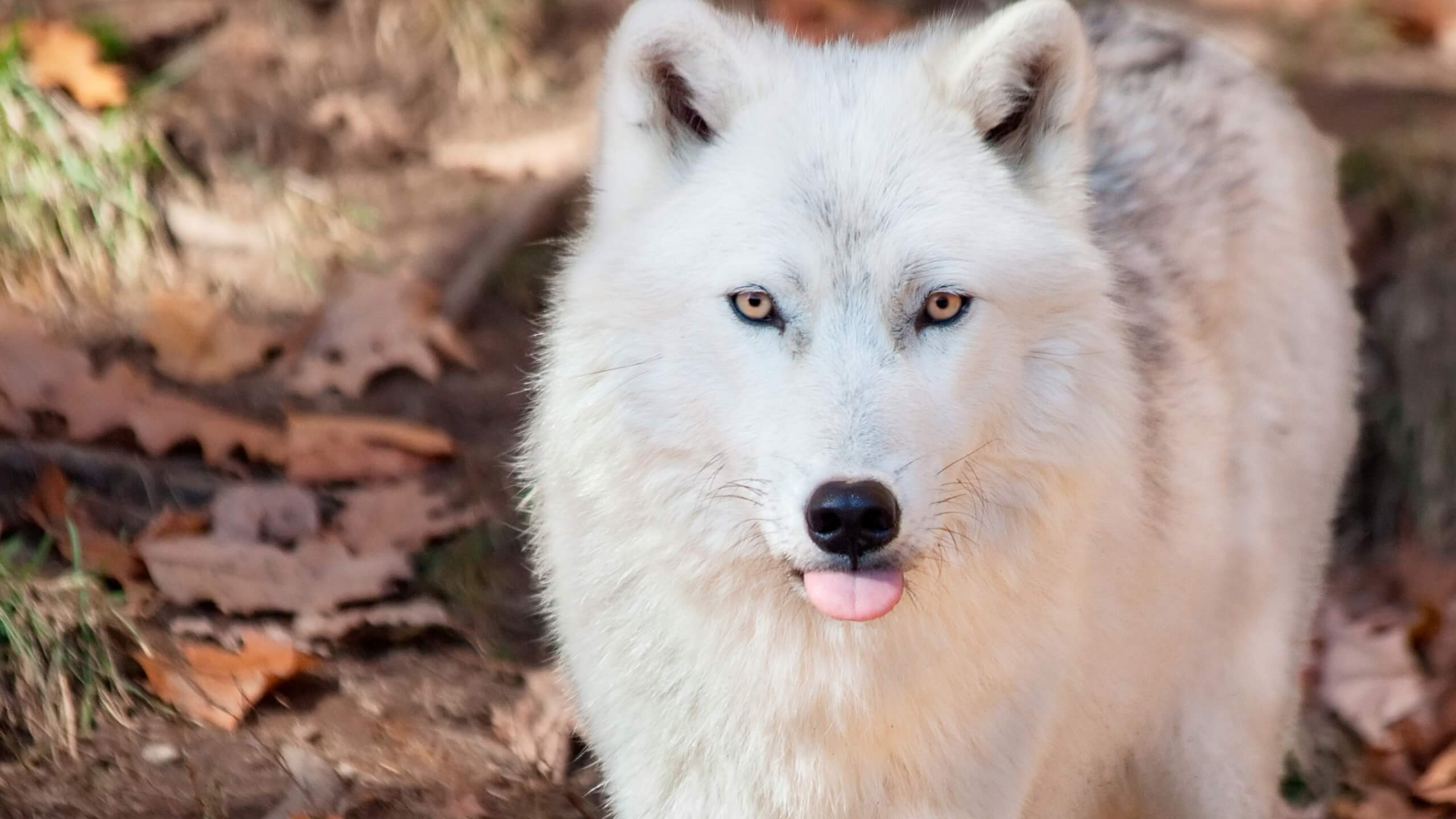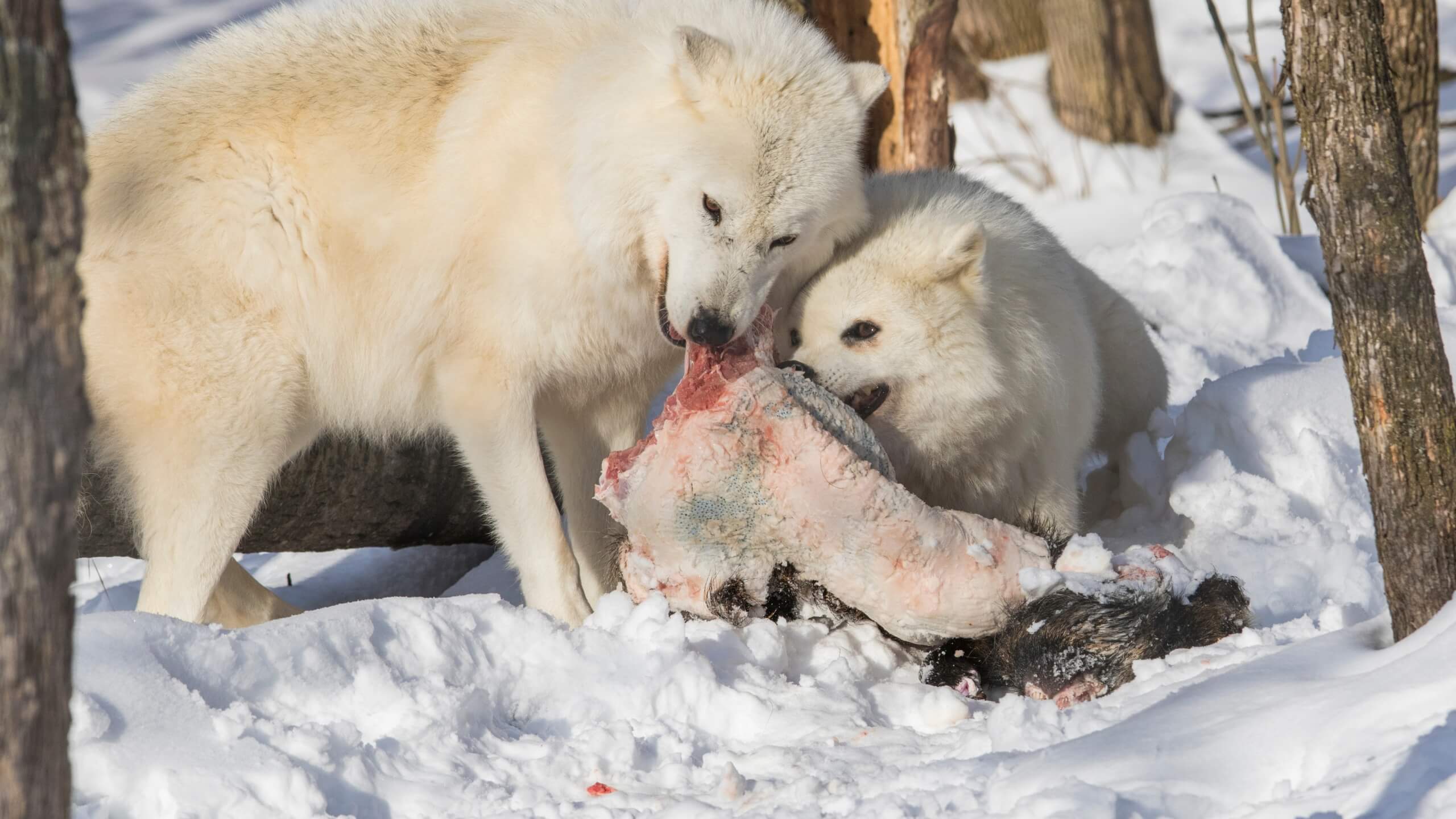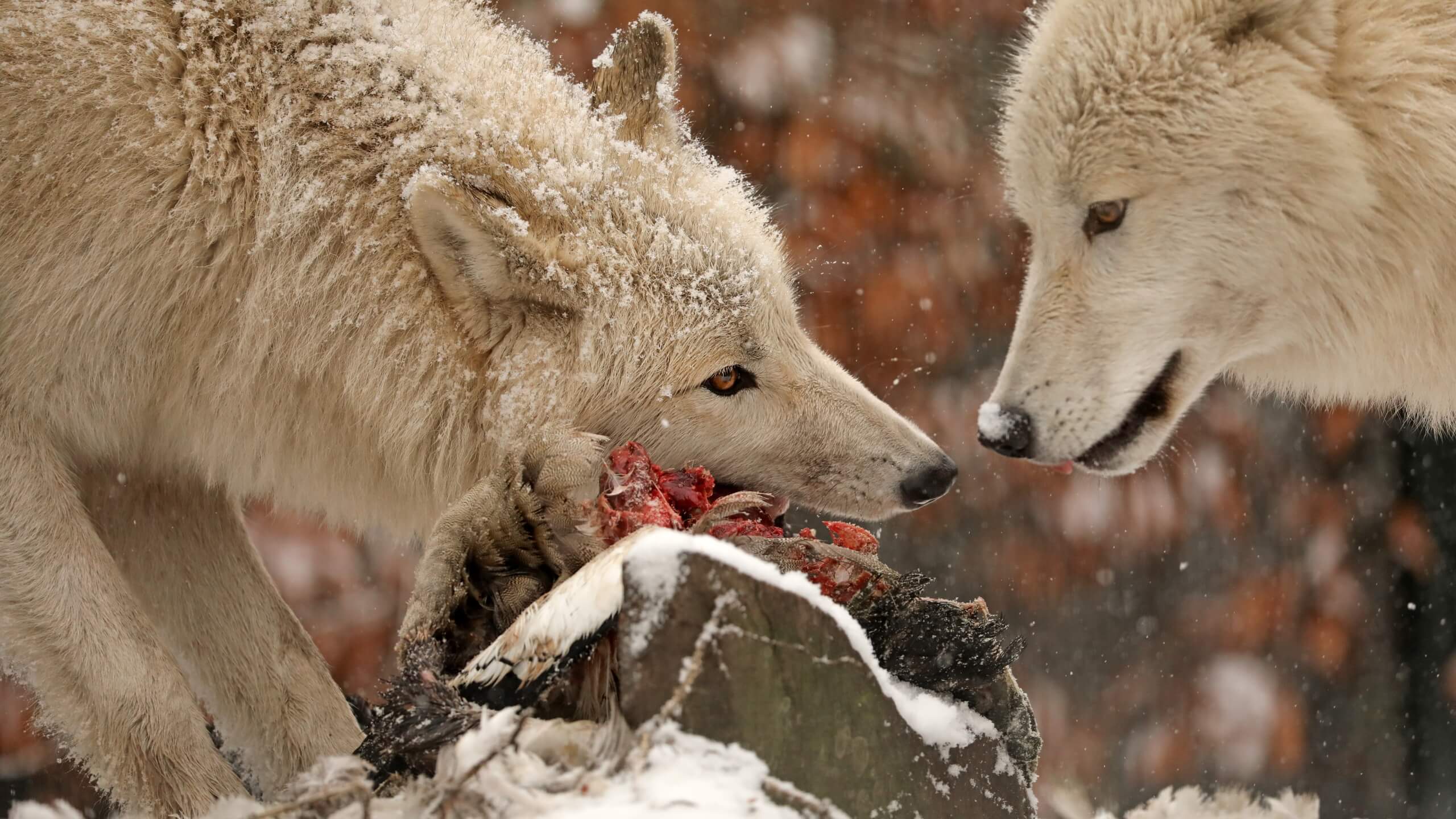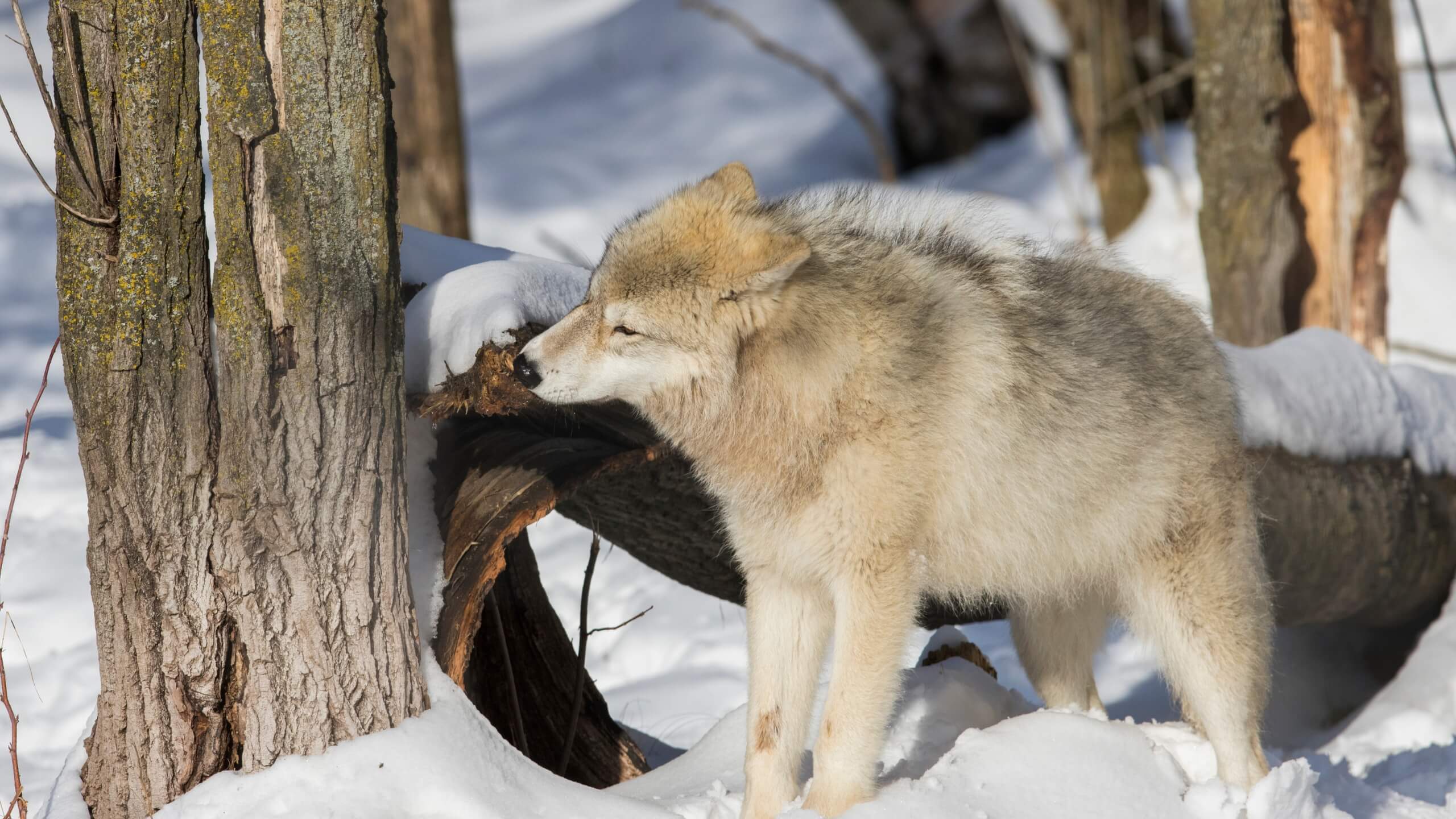Arctic wolves are a subspecies of gray wolves adapted to the harsh Arctic environments of North America and Greenland. They have thick white fur to blend in with snowy surroundings. Their diet mainly consists of caribou, muskoxen, and Arctic hares, including smaller mammals like lemmings and seals when available. They are skilled hunters, working together in packs to take down larger prey and ensure their survival in challenging conditions.
What do Arctic Wolves Eat?
Arctic wolves are carnivorous predators and mainly eat meat. Their diet mainly consists of Muskoxen and caribou and both are the main source of food them. These are large herbivores that migrate to the Arctic regions and provide a substantial source of food during certain times of the year. They also eat Arctic hares, lemmings, ptarmigan, and other small animals, such as nesting birds.
Also read: Why are Arctic Wolves endangered?
They are highly adaptable and opportunistic hunters. They may also scavenge on carcasses left behind by other predators or feed on marine animals like seals and fish when living near coastal regions.
Their successful hunting depends on their remarkable teamwork. Working together, they can take down larger and more intimidating prey, ensuring a more compatible food supply for the entire pack.
What do Arctic wolves eat in captivity?
In captivity, Arctic wolves are fed a diet of raw meats, bones, organ meats, and supplements to mimic their natural nutritional needs and preferences. The diet ensures their health and well-being while replicating their natural dietary habits.
What do baby wolves eat?
At first Baby wolves, or wolf pups, often drink their mother’s milk. As they grow, they start eating meat. Since baby wolves are too young to hunt, adult wolves bring meat to them in their stomachs. The pups lick around the mouth of the adult when it returns from the hunt, and the food comes back up into the adult’s mouth.
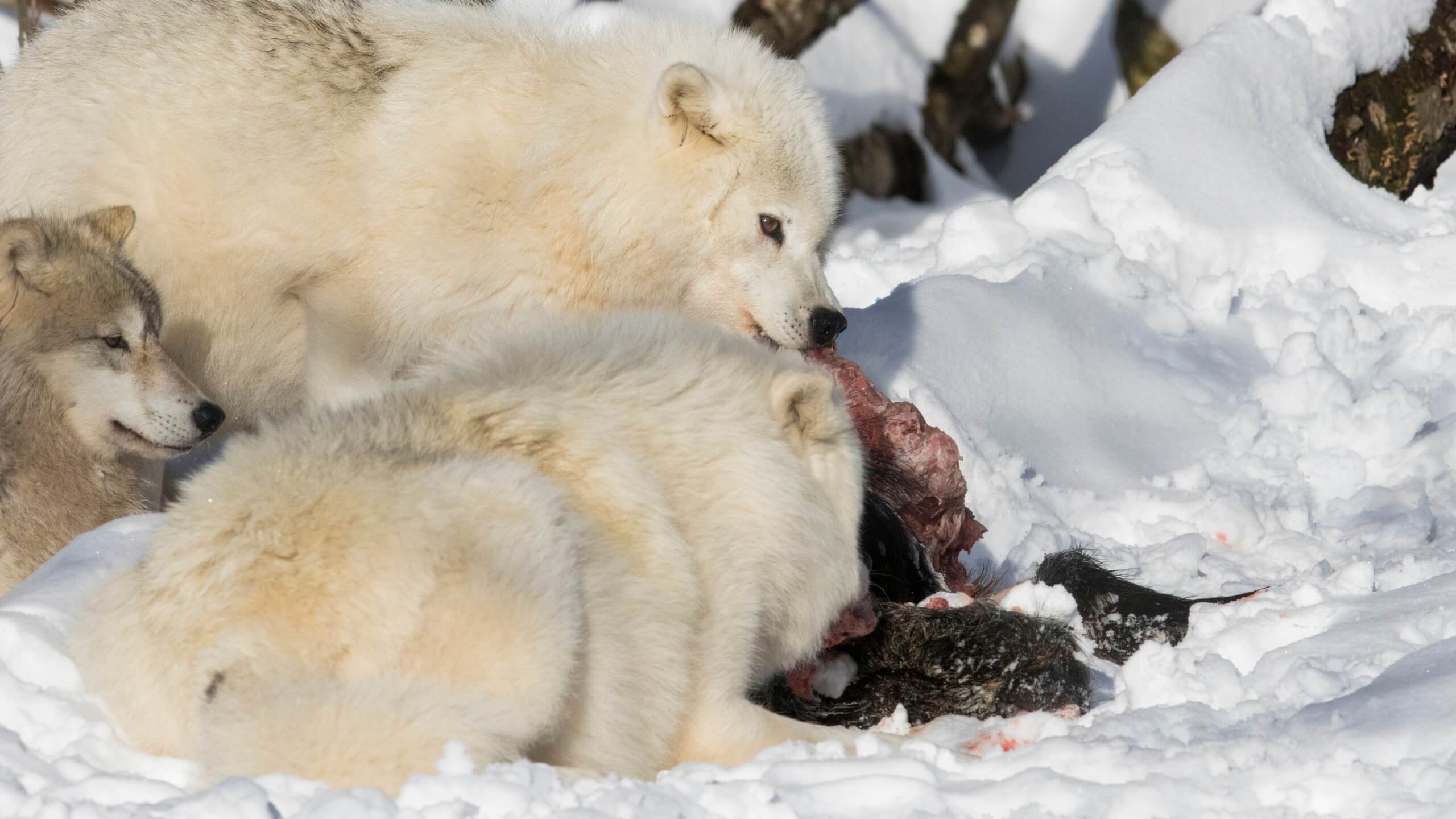
How do Arctic Wolves hunt?
Arctic wolves hunt by using teamwork to chase and ambush their prey, often targeting vulnerable individuals. They rely on their keen senses, camouflage, and coordinated efforts to catch and immobilize their food. They illustrate their intelligence in choosing their prey, they mostly look for old, sick, or weak animals that are easier to catch.
They work very hard to catch their prey; they kill only one of every ten large mammals they chase. It’s important to note that the hunting behavior of wolves can vary based on factors such as prey availability, pack size, and local conditions. Additionally, with the ongoing impacts of climate change, the behavior and habits of Arctic wolves may be subject to changes as their environment shifts.
Where do Arctic wolves eat?
Arctic wolves primarily eat in their natural habitats, which include the tundra and Arctic regions of North America and Greenland. They hunt and consume their prey in various locations within their territory. These areas include open landscapes, snow-covered terrain, frozen lakes, and rocky slopes. They are adjusted to survive in harsh environments.
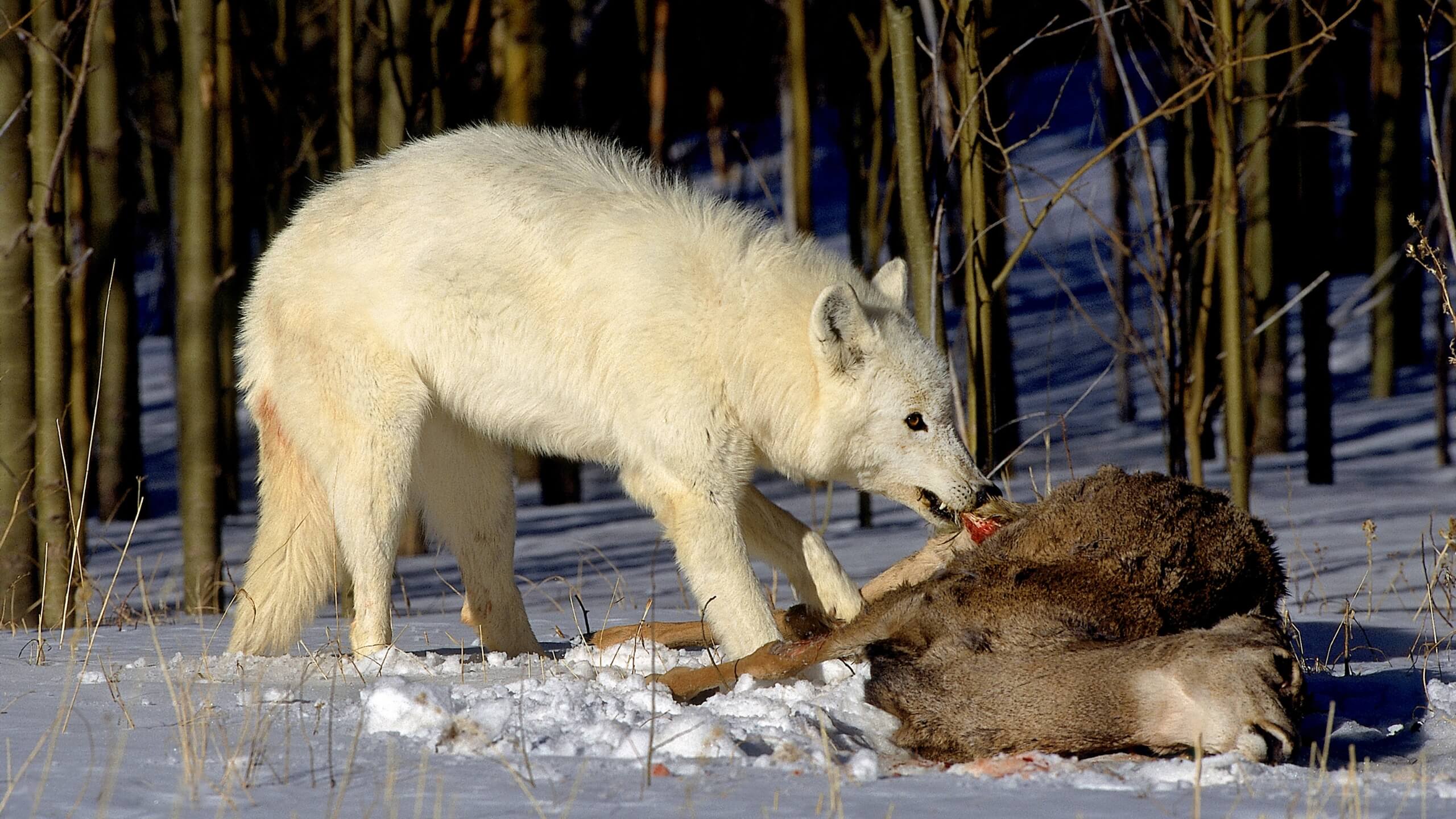
How much do Arctic wolves eat?
Arctic wolves can eat several kilograms (pounds) of meat in one meal, but the amount varies based on factors like prey availability and pack size. They have a relatively high metabolism and consume more during winter to stay warm. But it is estimated that wolves consume around 10 pounds of meat per day.
How do Arctic wolves deal with other Arctic predators?
Arctic wolves deal with other predators through territorial behavior, niche partitioning, scavenging, coexistence strategies, avoidance behavior, camouflage, and adaptability. They adjust their interactions based on factors like prey availability and predator size to minimize conflicts and maximize survival.

